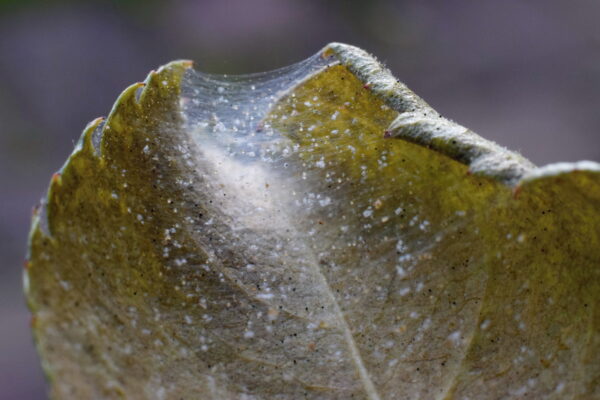Blog, What's Wrong With My Trees?
What Is Wrong With My Tree? Spider Mites
 Spider mites are insects
Spider mites are insects
Spider mites are very small, nearly microscopic, pests that produce protective silk webs similar to spider webs that can be found on deciduous trees, evergreens, and other plants. The mites are actually in the “spider” family and not true insects. While the webs are visible, the discolored foliage caused by their feeding is even more noticeable.
What Trees & Shrubs Are Affected By Spider Mites?
Spider mites are not picky when it comes to their choice of host tree. They are very common and attack a wide variety of garden, field, greenhouse, nursery, and ornamental plants. In our region, look for spider mites on spruce, bald cypress, honey locust, and burning bush shrubs.
What Is The Lifecycle Of Spider Mites?
Female spider mites spend the winter under the bark of trees, in cracks in the soil, and other protective areas before emerging in the spring and laying eggs, which hatch in 5-7 days. These pests prefer dry, hot weather, so serious damage is more likely to occur in the hotter months.
What Are The Symptoms Of Spider Mite Damage?
While spider mite webs are sometimes evident, weakened foliage is even more visible. Low numbers of mites can quickly blossom in to a population explosion and result in yellowed and bronzed foliage. Leaf drop and overall vitality in the plant will also be seen.
What Are The Treatments For Spider Mites?
Spider mites can be difficult to control on shrubs and trees. A quick, organic way to remove them is to spray the leaves and branches of your trees with a hard blast of water from a hose. This will dislodge the mites and wash them to the ground. Because they are not good climbers, they will likely die on the ground.
Other treatments can be prescribed by your ISA-certified arborist from Hansen’s Tree Service. Treatments may include horticultural or dormant oils that control overwintering mites and eggs.
